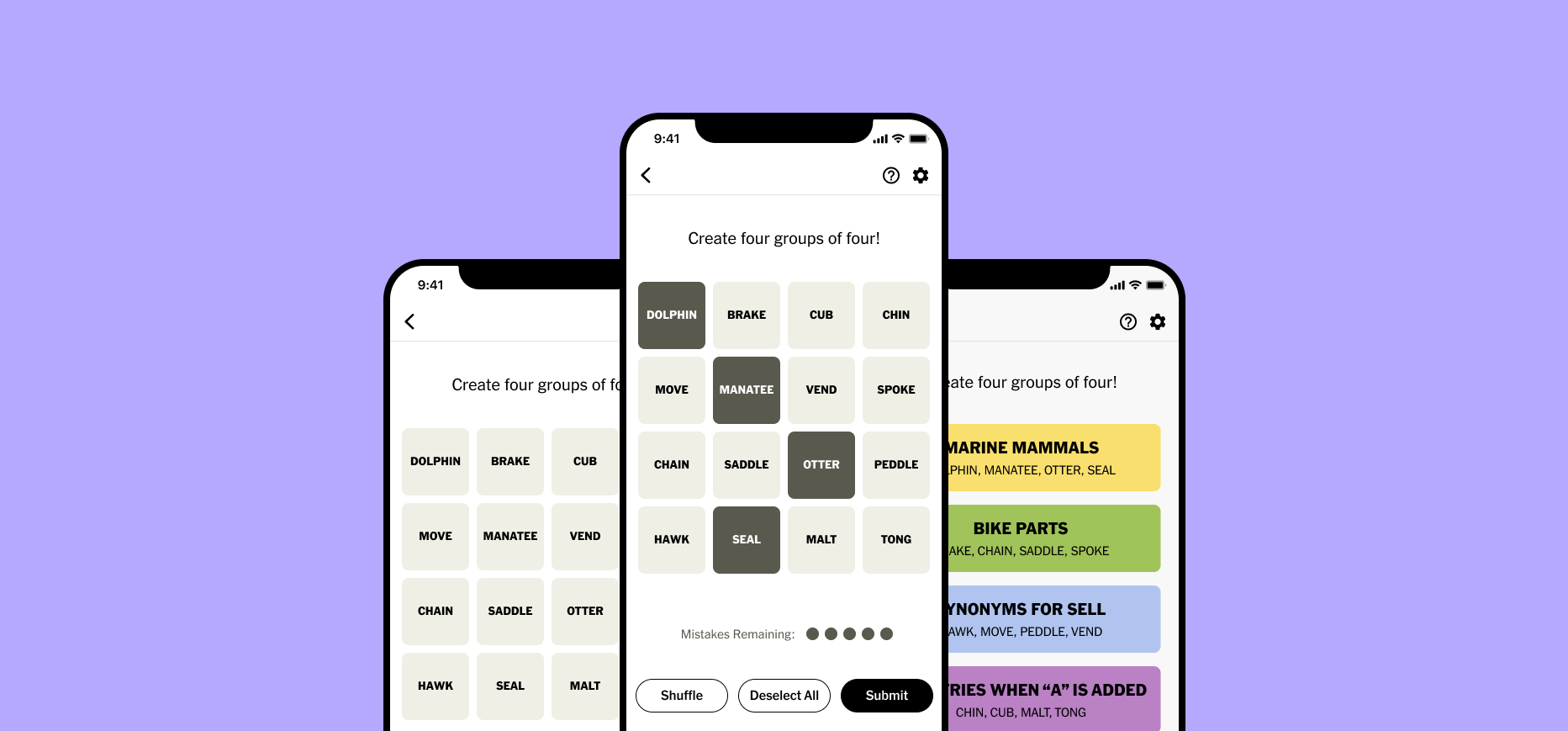
Jonathan Knight, head of games for The New York Times, has a few rules for new games.
Connections, the newest game from NYT Games, checks all of the above. The 16-word puzzle opened in beta on June 12 and, on Friday, made its debut on the The New York Times Games app and the “Play” tab of The New York Times app. (Connections joins crossword puzzles, Spelling Bee, Sudoku, and Wordle, among others.) Connections is now the Times’ second-most played game (after Wordle) and the most successful launch of any game developed in-house since the Times introduced the Mini Crossword in 2014. (The Times declined to give specific user numbers.)
That kind of success is hugely important to The New York Times, which is all about the bundle nowadays. The Times has found that a subscriber who engages with both news and games in any given week is more likely to stay a long-term subscriber than a subscriber who uses any other product (or combination of products among news, games, Wirecutter, The Athletic, or Cooking). In addition to its dedicated NYT Games app, the Times offers puzzles in its flagship news app.“I like to say: ‘Come for the news, stay for games,’” Knight said.”Anything that we can do to create that ‘news plus games’ daily habit, right there in the news app, is a really powerful driver of our strategy as a company.”
Not every new game finds an audience. The math-based game Digits, introduced in a “beta” version in April, was shut down in August.
“We always try to remind ourselves that this is both art and science,” Knight said. “You can check all the boxes, but it doesn’t necessarily mean you’re going to have success.”
Still, Knight said having a process around game development is critical. New games go through a greenlight process similar to one you’d find at gaming or entertainment companies. The full system includes everything from recruiting diverse prototype testers to the Times’ legal team checking for copyright issues with the game’s name.
“We start with a giant funnel of ideas and they can come from anywhere. We run these hackathons called Game Jam where anybody on the team can come up with a game idea and pitch it,” Knight explained. “Once something develops into a pitch, we start putting it through the paces.”
New games are evaluated based on metrics the Times knows will boost its subscription business. That means reach is important — the massively popular Wordle, played by tens of millions of people each week, is a free funnel to the rest of the Times’ games — but retention is king. The Times looks for games that prompt people to come back day after day, and sees indicator metrics showing users playing every day for seven days and every day for 30 days as particularly telling.Connections proved to be a real contender by performing well in these all-important measurements right away. The Times doesn’t do marketing for its betas beyond adding links to them in the Games menu alongside existing games. But Connections soon became the first result you get if you Google “connections.”
“What we were excited about early on with Connections was the volume of new users every day. It was growing quite quickly, and a lot were coming in through search,” Knight said. “As a percentage of our new user volume, compared to Digits, a lot more of them were coming in through search. That gave us a sense that there was a little bit of organic virality happening.”
Knight was also impressed by the percentage of users sharing their results. The colorblocked output will remind you of those generated by Wordle.
Wyna Liu writes the daily Connections puzzle. (Knight called the game “our most editor-driven game since the crossword puzzle.”) She wrote a piece for Times Insider on how she contorted her crossword prowess into another format, taking inspiration from cartoonist and puzzle maker Robert Leighton and the playful question-mark crossword clues she already knew well along the way.We here at Nieman Lab got inspired, and made our own version. You can try it out here.